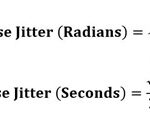What is CSFB Procedure in LTE?
Today, let’s dive into the concept of CSFB, or Circuit Switched FallBack, a key procedure in LTE networks. As we’ve discussed before, LTE (Long-Term Evolution) networks are designed to offer high-speed data services, but they primarily focus on packet-switched data. This can create some challenges when it comes to handling voice calls, as LTE doesn’t natively support traditional circuit-switched (CS) voice calls like older 2G and 3G networks do. To address this, the CSFB procedure was introduced.
CSFB (Circuit Switched Fallback) is a procedure used in LTE networks to handle voice calls and SMS services when the user is in an LTE coverage area but needs to switch to a 2G or 3G network to make a voice call. Since LTE is an all-IP (Internet Protocol) network, it doesn’t support circuit-switched voice by default. CSFB allows the LTE network to fall back to an older circuit-switched network for voice calls, while still maintaining the benefits of the high-speed LTE data network for internet usage.
To explain how this works, imagine you’re using LTE for data services, and you receive an incoming voice call. Here’s what happens:
- Step 1: Incoming Voice Call: When the call comes in, the LTE network detects that it cannot handle the voice call directly because voice services require a circuit-switched connection. It then triggers the CSFB procedure.
- Step 2: Switching to 2G/3G: The LTE network instructs the user equipment (UE) to “fall back” to a 2G or 3G network, where the voice call will be handled. This ensures that the user can receive the voice call without dropping it.
- Step 3: Handling the Call: Once the UE is connected to the 2G/3G network, the voice call is placed and managed by the older circuit-switched network.
- Step 4: Return to LTE: After the voice call ends, the UE returns to the LTE network to resume data services. The transition between the LTE and circuit-switched network is seamless, so users don’t experience a disruption in their service.
The CSFB procedure ensures that LTE users can still enjoy voice services like they would on older networks while maintaining LTE’s fast data capabilities for other services. This procedure is particularly useful in regions where Voice over LTE (VoLTE) is not yet available, allowing operators to continue providing voice services without needing to upgrade to full VoLTE support.
In the CSFB procedure, there are some important components to consider:
- CSFB Interworking Function: This function helps in the coordination between the LTE network and the 2G/3G circuit-switched network. It ensures that the handoff from LTE to the circuit-switched network happens smoothly.
- Fallback to 2G/3G: When the UE moves from the LTE network to the circuit-switched network, it needs to switch its radio access technology (RAT) to 2G or 3G. This ensures that the call can be completed, even though the LTE network is unable to support it.
- Network Synchronization: The process requires careful synchronization between the LTE and circuit-switched networks to avoid call drops and ensure a seamless handoff back to LTE after the call ends.
Why is CSFB important? The procedure allows LTE networks to provide seamless voice services to users without having to implement a fully separate voice infrastructure. It’s a practical solution that ensures compatibility with older network technologies while leveraging the advantages of LTE for data services. As we’ve learned in previous articles, one of LTE’s key strengths is its ability to deliver high-speed data, and CSFB makes sure voice calls don’t interfere with that performance.
In conclusion, CSFB is a crucial procedure that enables voice calls on LTE networks by temporarily falling back to 2G or 3G networks for voice services. It allows users to seamlessly switch between high-speed data and voice calls, ensuring a smooth and uninterrupted experience.


